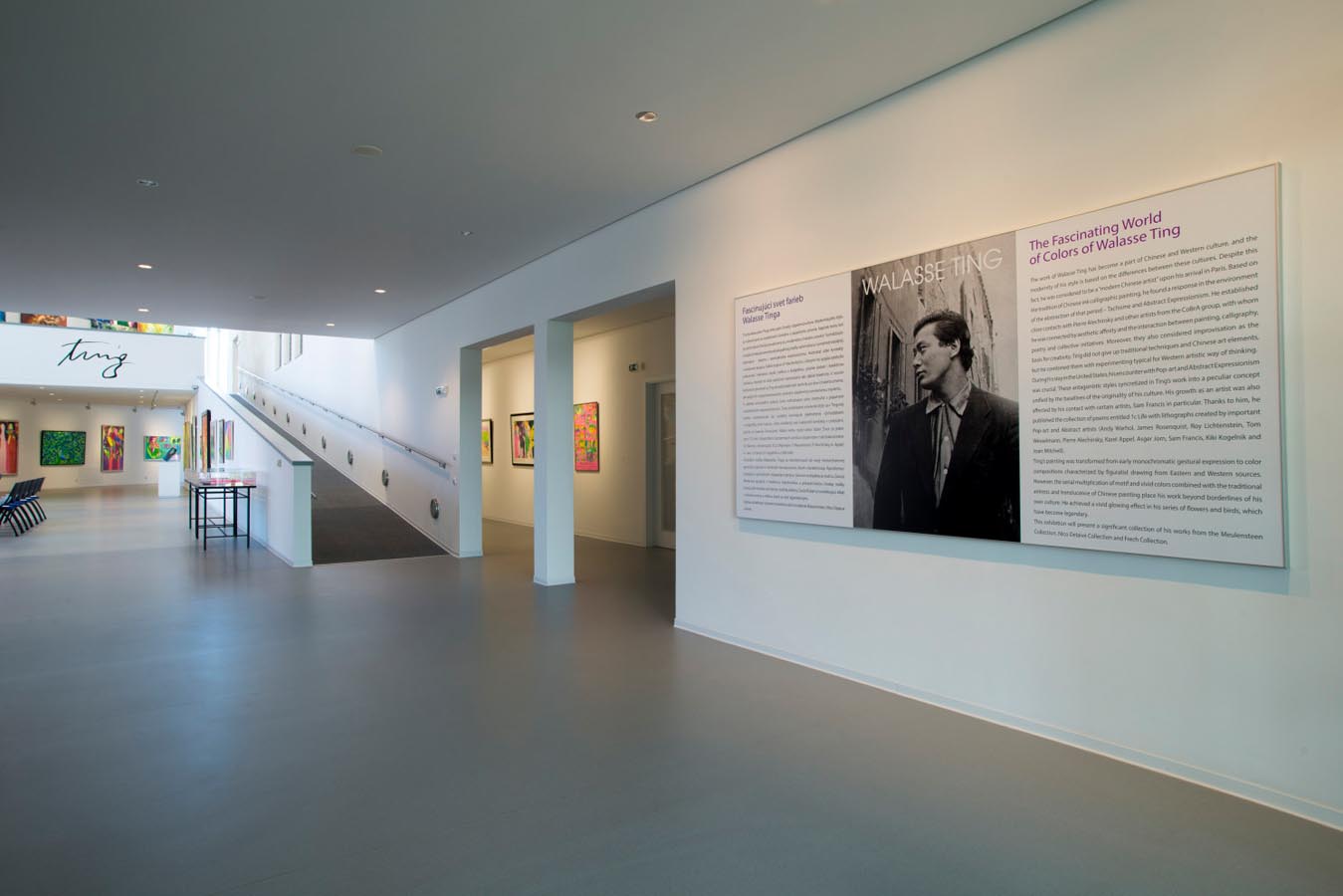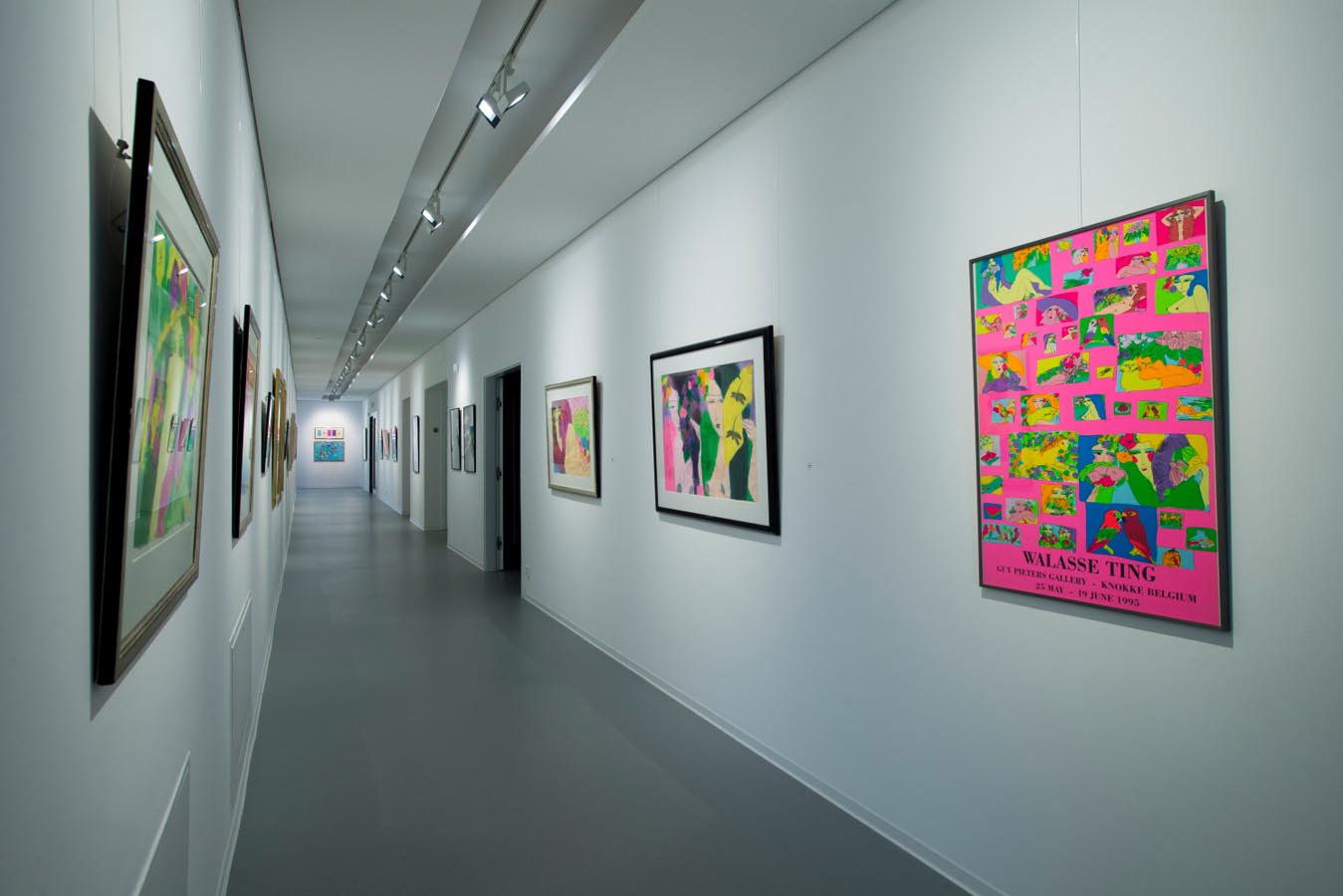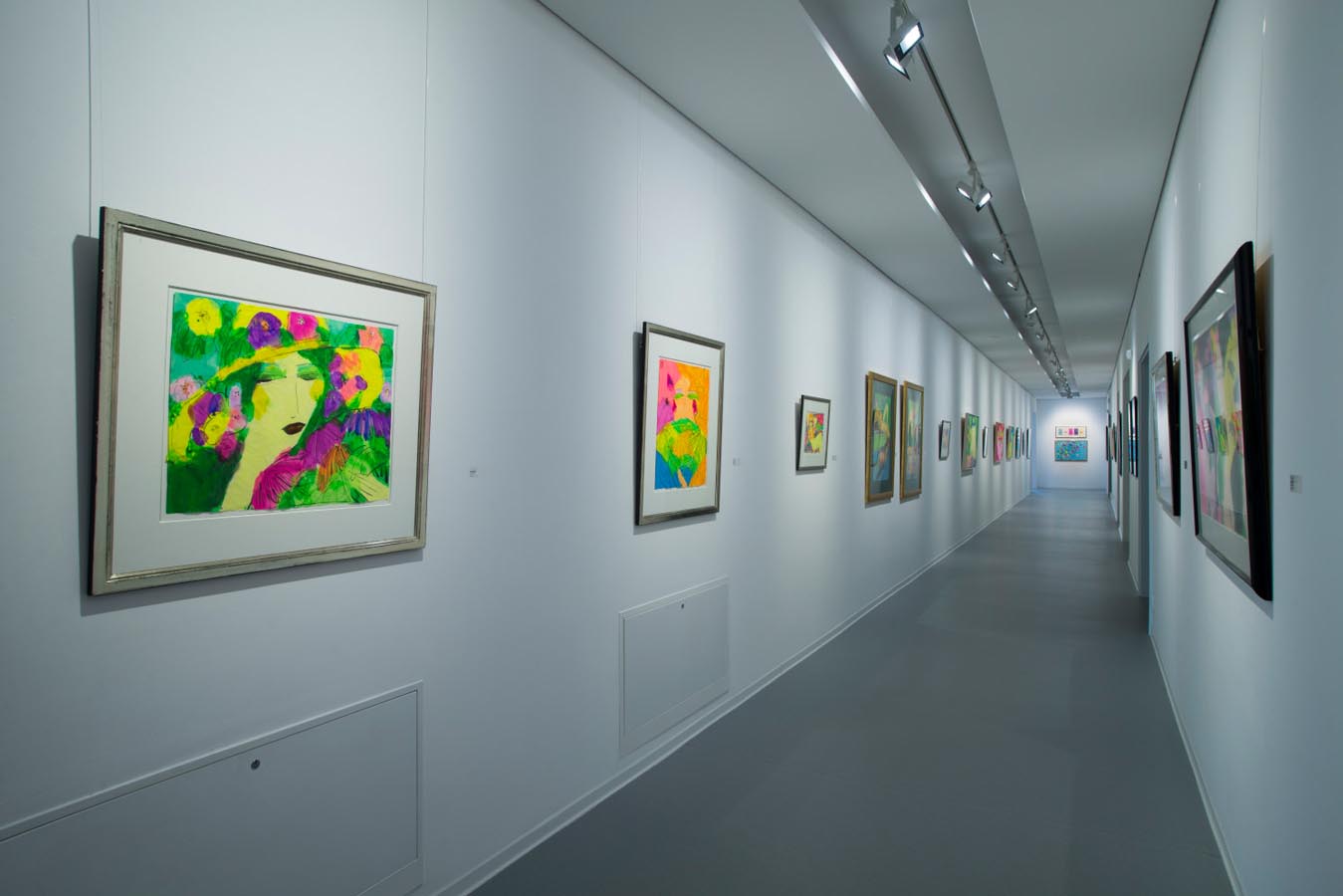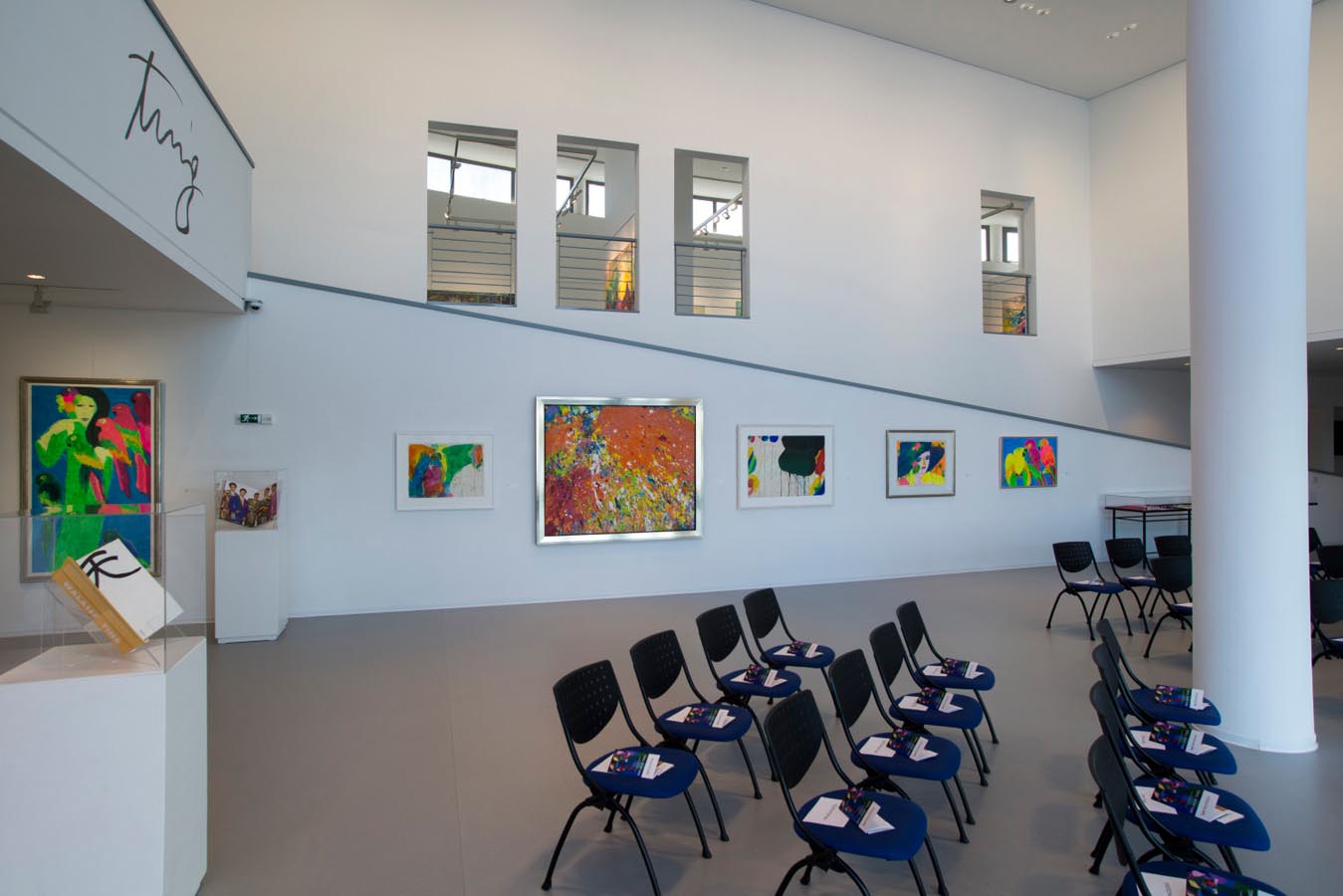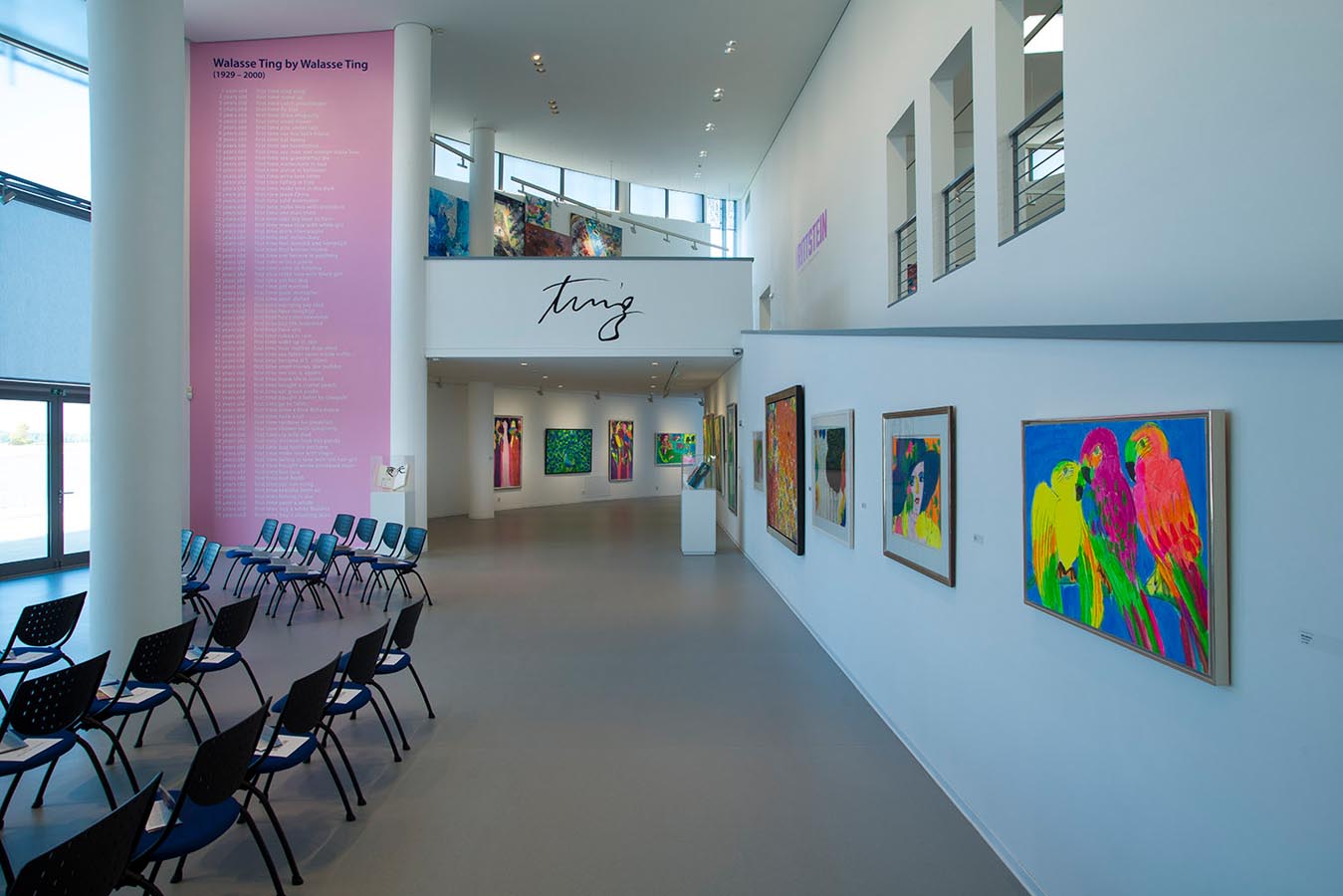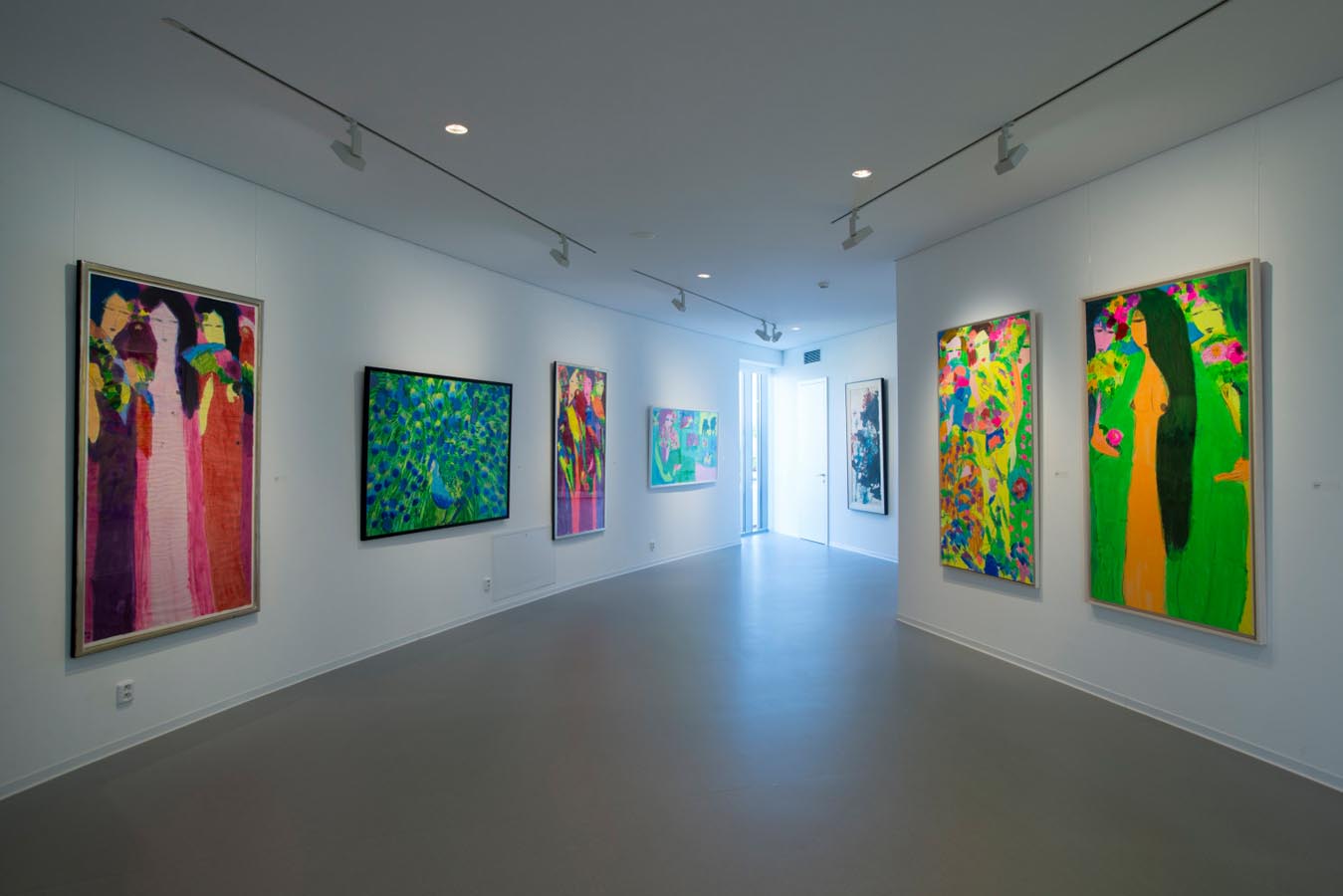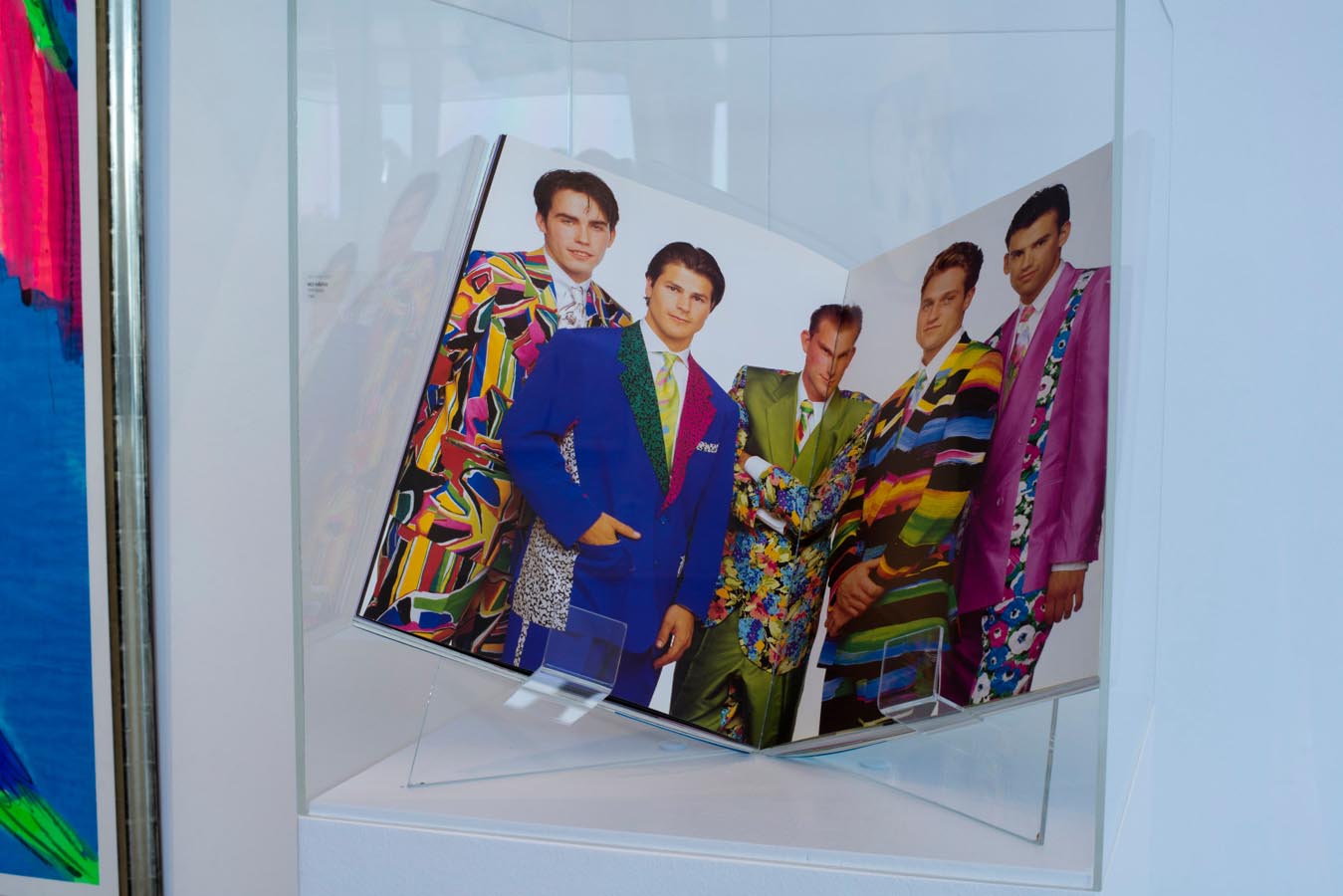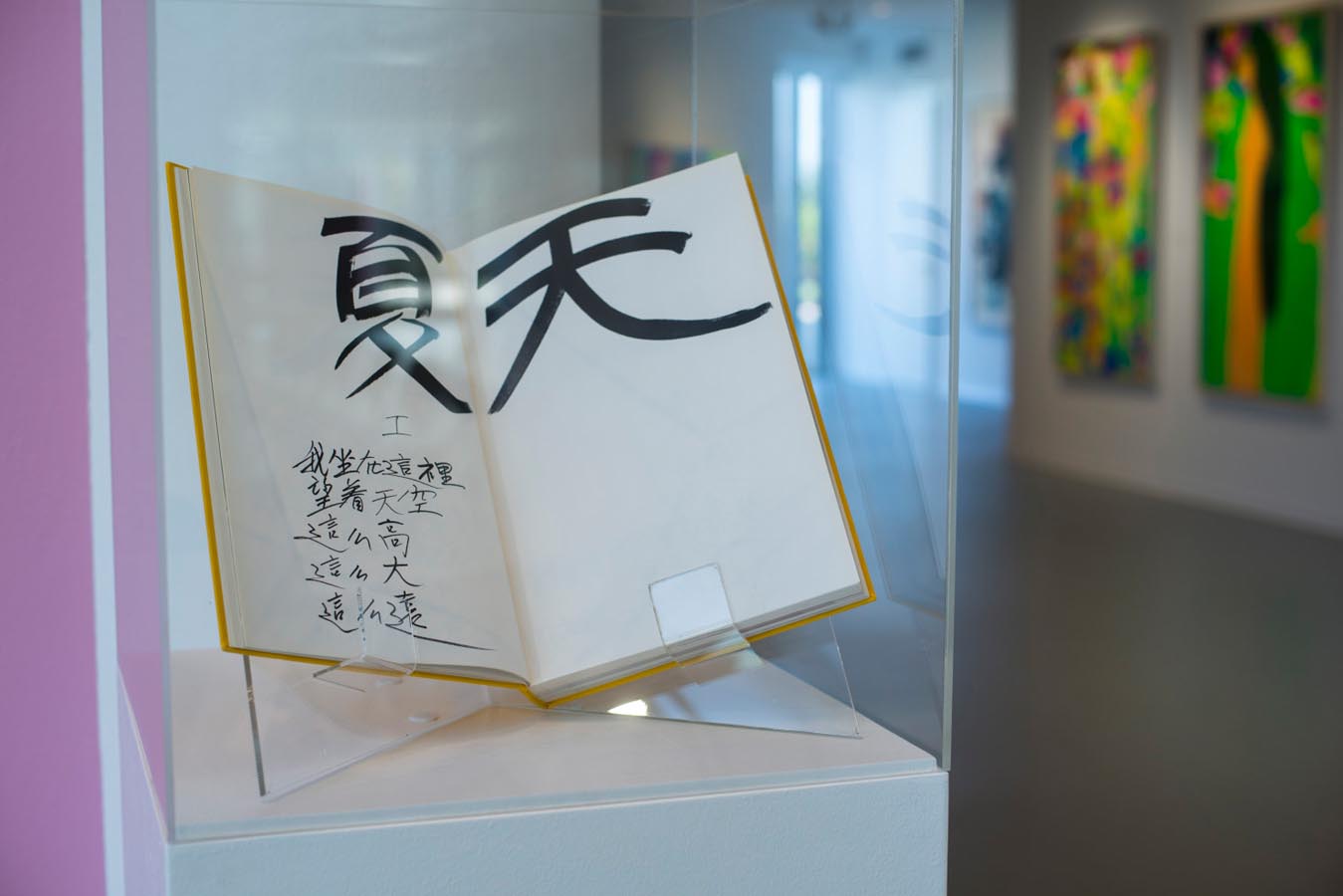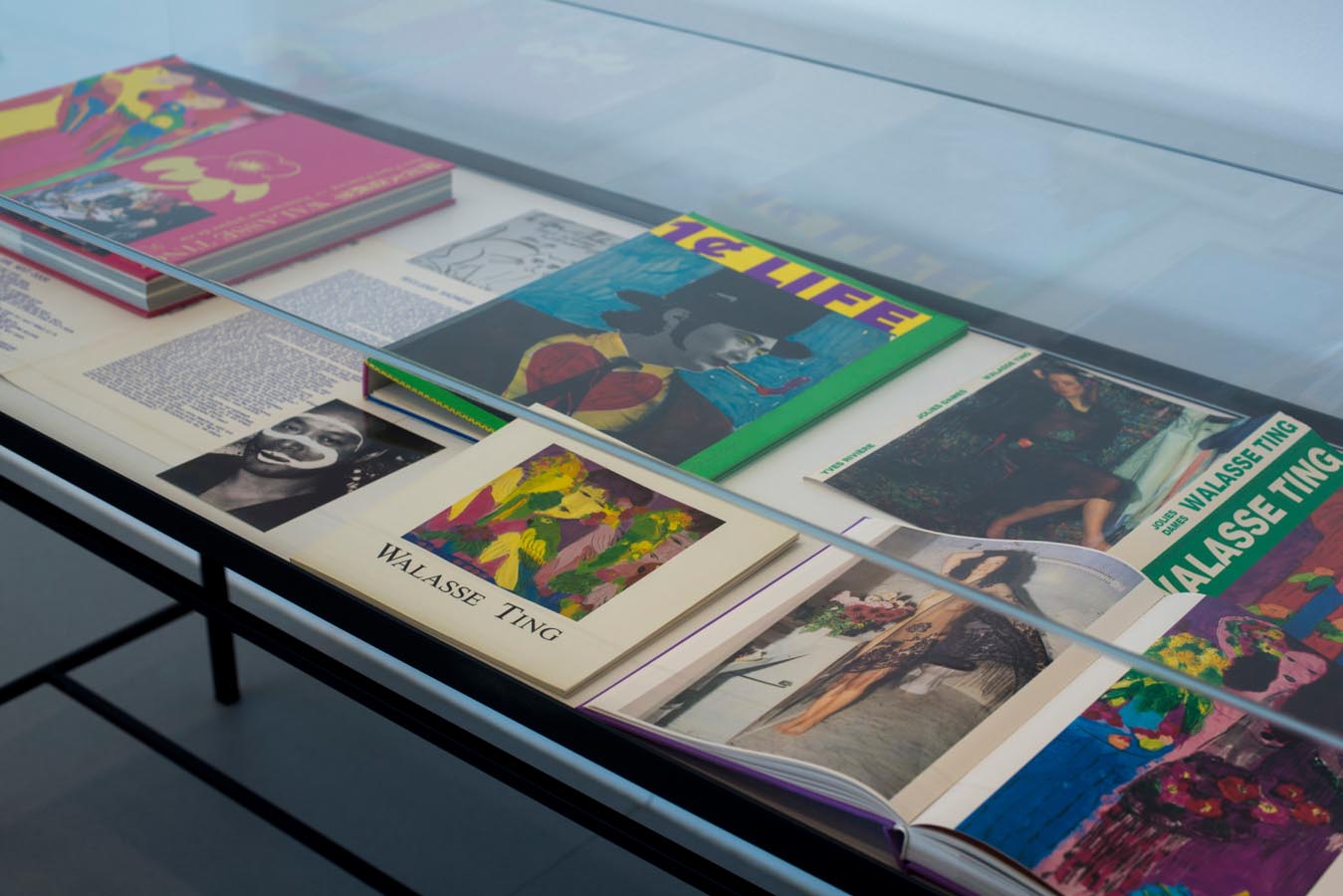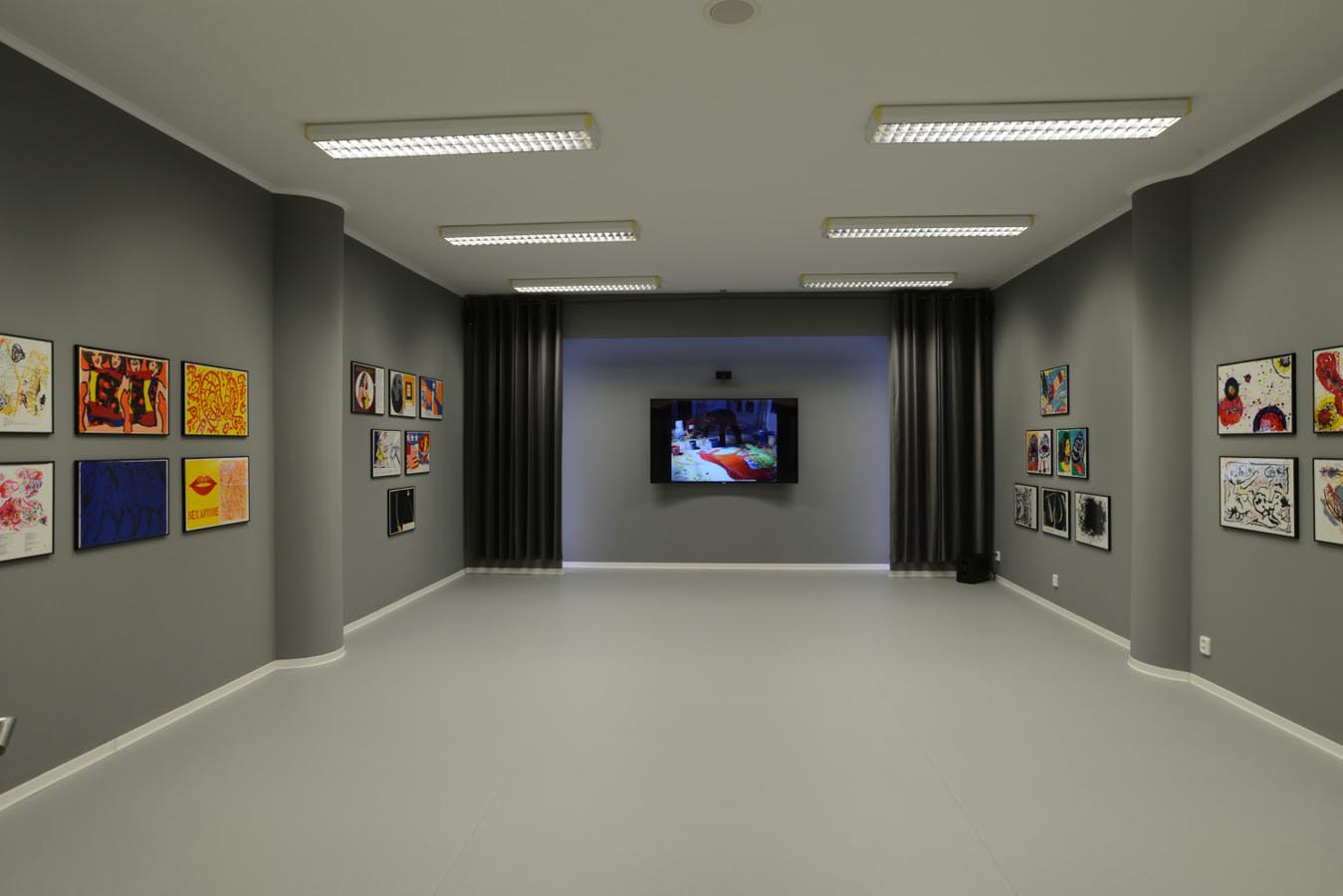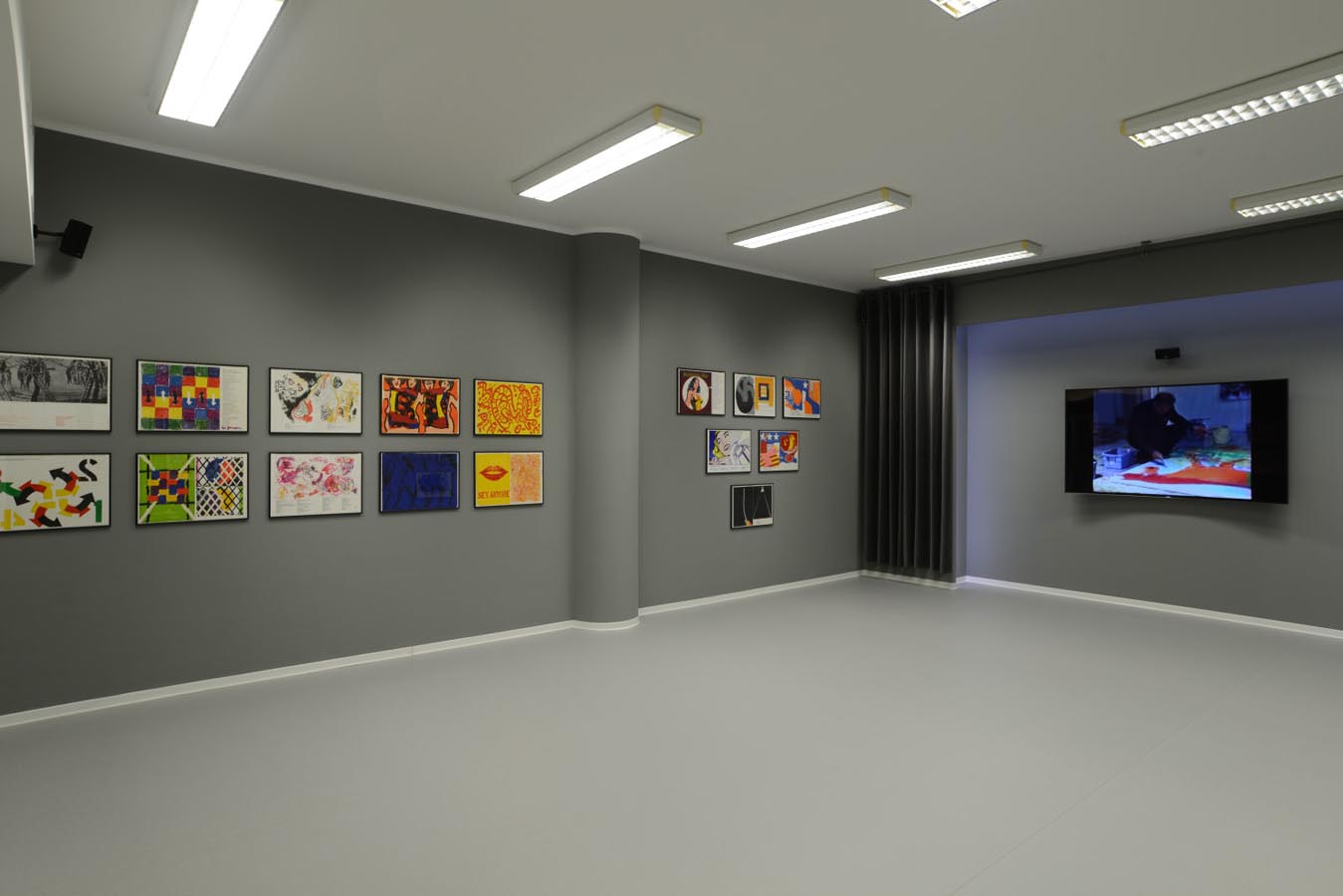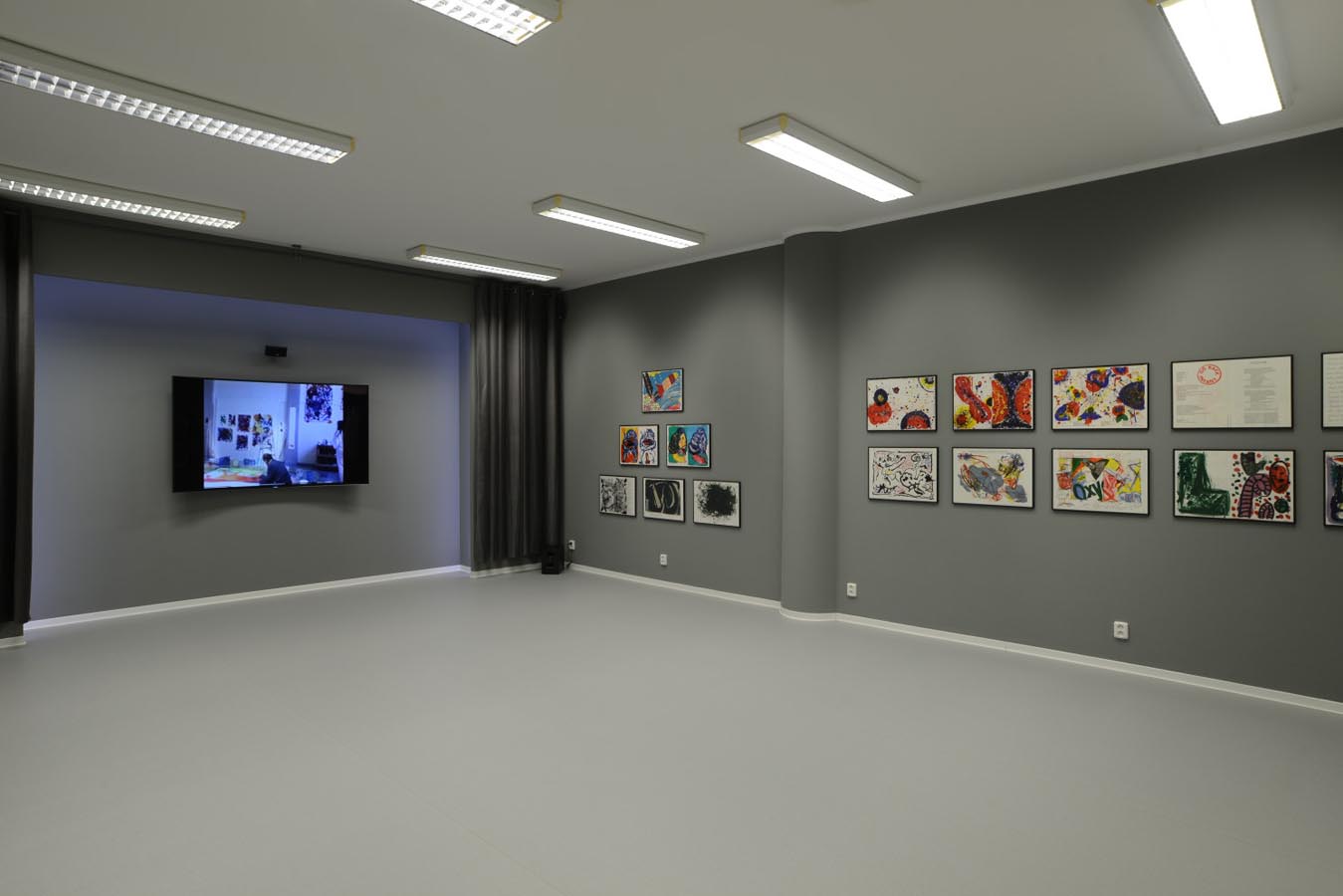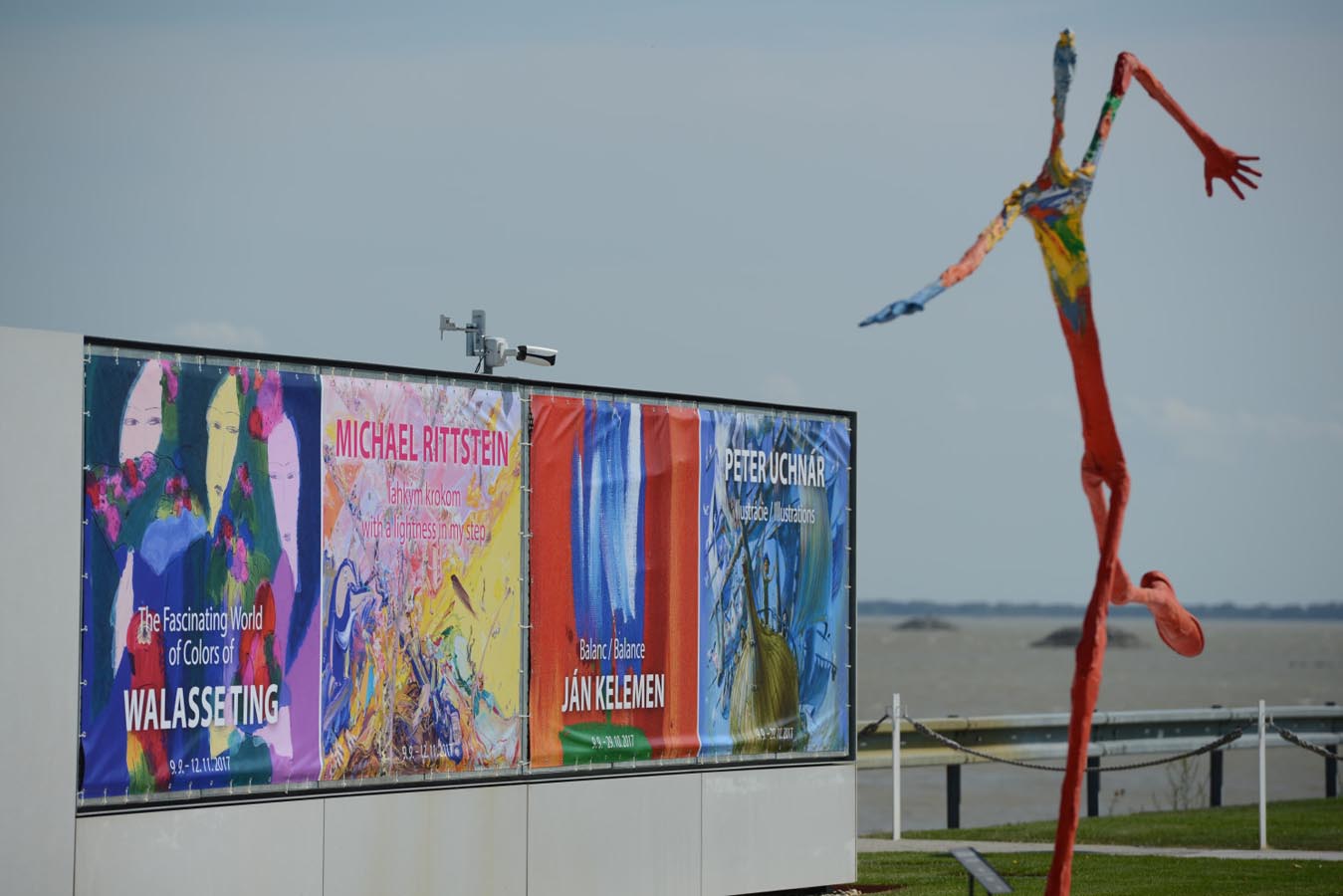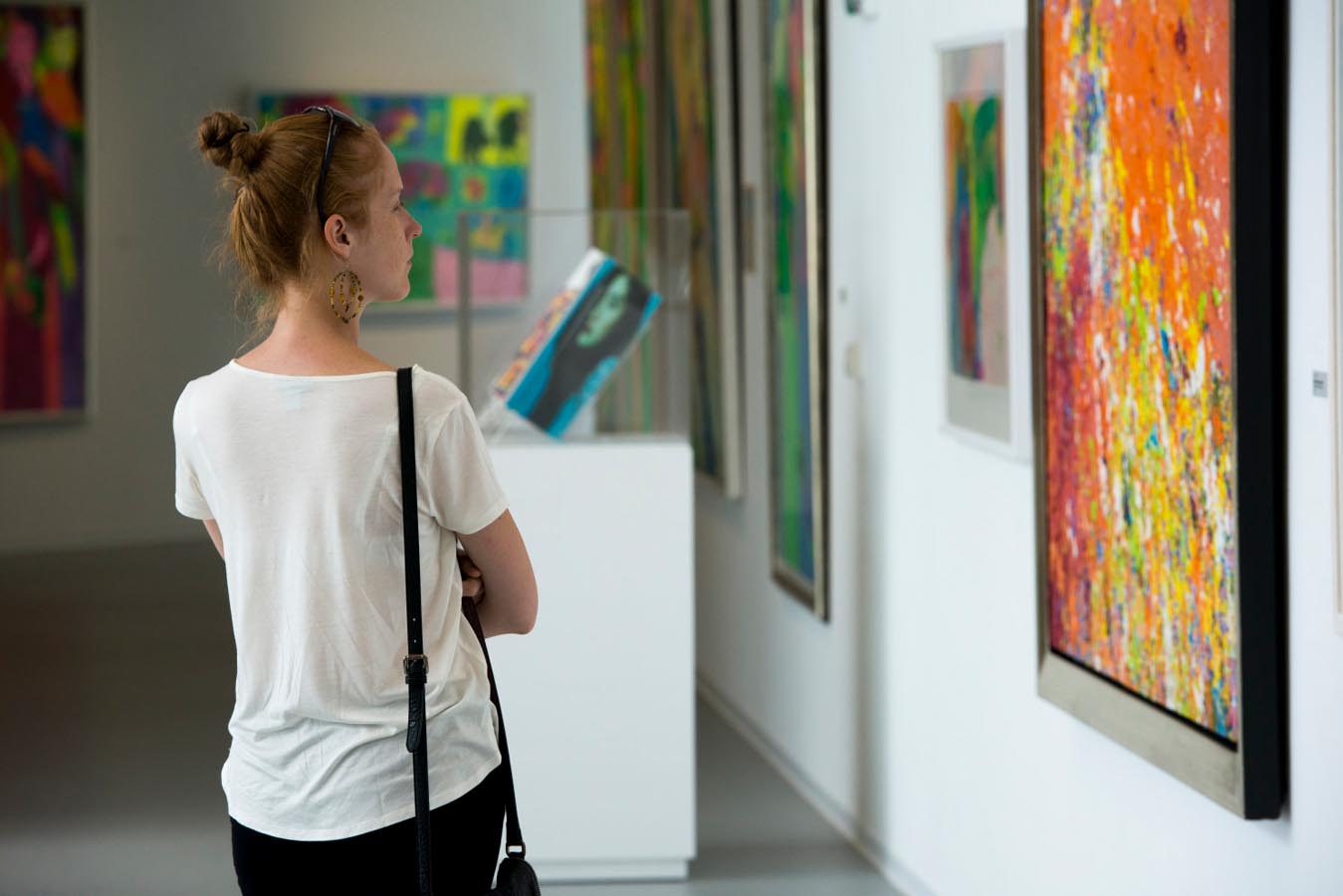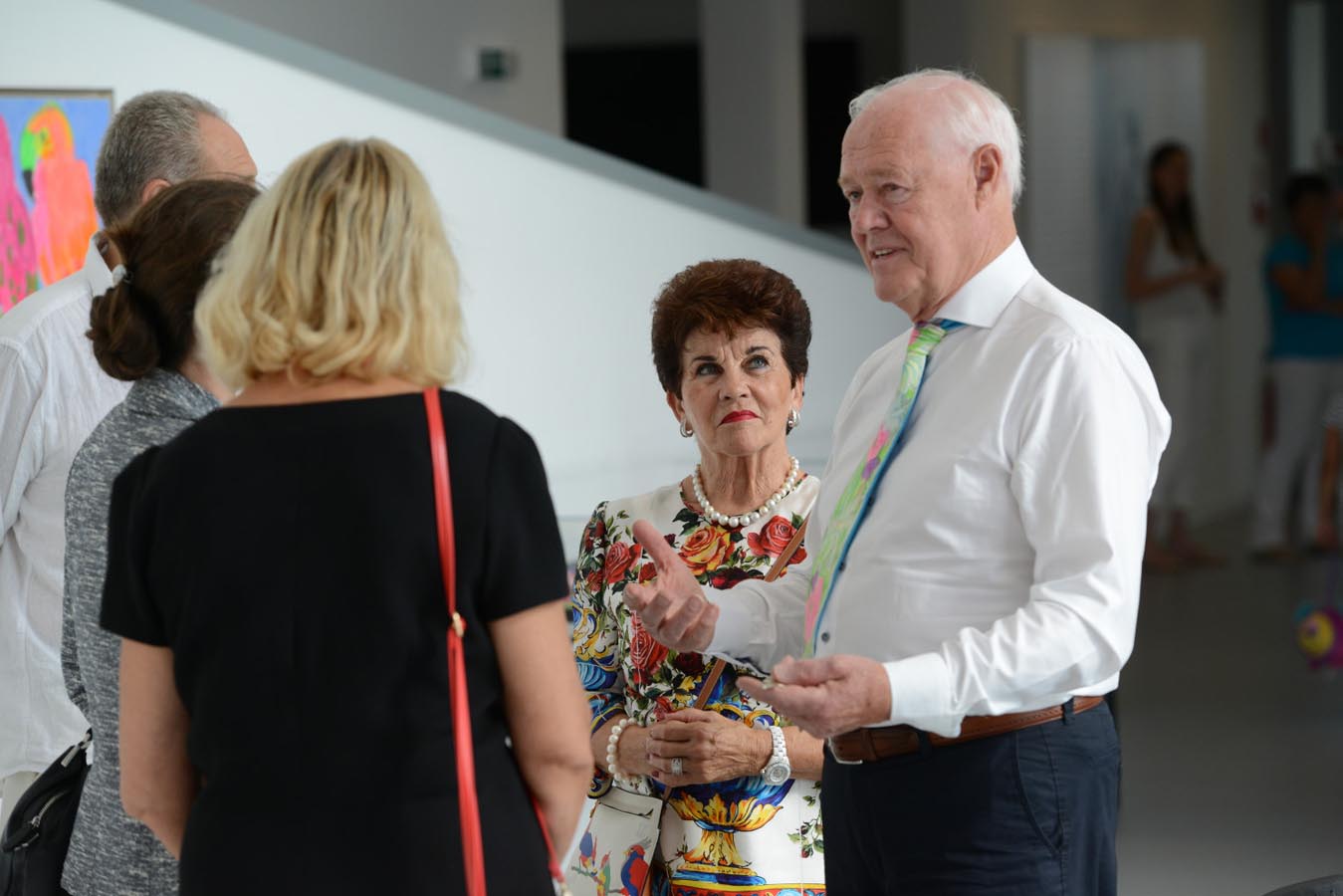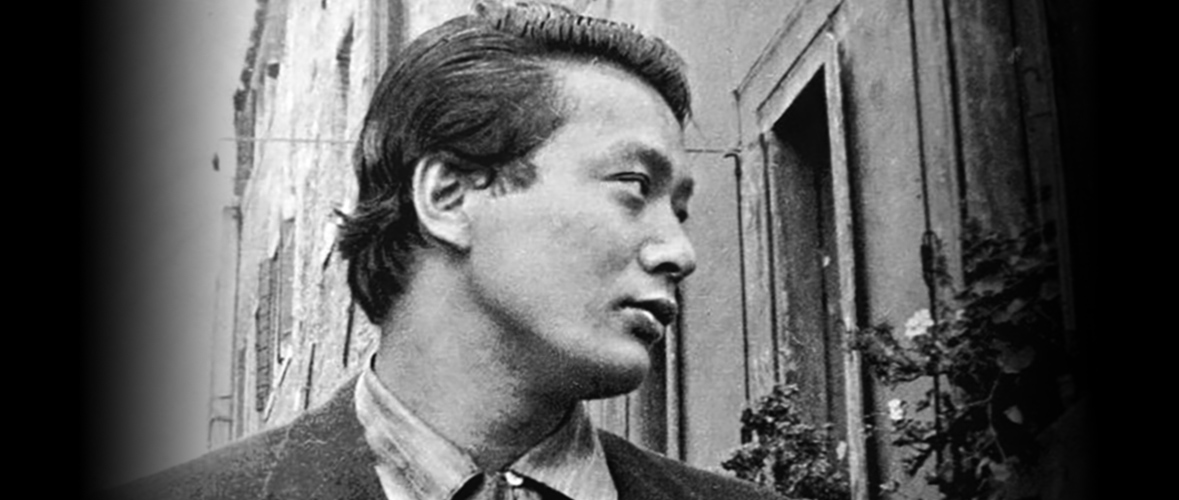

The work of Walasse Ting has become a part of Chinese and Western culture, and the modernity of his style is based on the differences between these cultures. Despite this fact, he was considered to be a “modern Chinese artist” upon his arrival in Paris. Based on the tradition of Chinese ink calligraphic painting, he found a response in the environment of the abstraction of that period – Tachisme and Abstract Expressionism. He established close contacts with Pierre Alechinsky and other artists from the CoBrA group, with whom he was connected by aesthetic affinity and the interaction between painting, calligraphy, poetry and collective initiatives. Moreover, they also considered improvisation as the basis for creativity. Ting did not give up traditional techniques and Chinese art elements, but he combined them with experimenting typical for Western artistic way of thinking.
During his stay in the United States, his encounter with Pop-art and Abstract Expressionism was crucial. These antagonistic styles syncretized in Ting’s work into a peculiar concept unified by the baselines of the originality of his culture. His growth as an artist was also affected by his contact with certain artists, Sam Francis in particular. Thanks to him, he published the collection of poems entitled 1c Life with lithographs created by important Pop-art and Abstract artists (Andy Warhol, James Rosenquist, Roy Lichtenstein, Tom Wesselmann, Pierre Alechinsky, Karel Appel, Asger Jorn, Sam Francis, Kiki Kogelnik and Joan Mitchell).
Ting’s painting was transformed from early monochromatic gestural expression to color compositions characterized by figuratist drawing from Eastern and Western sources. However, the serial multiplication of motif and vivid colors combined with the traditional airiness and translucence of Chinese painting place his work beyond borderlines of his own culture. He achieved a vivid glowing effect in his series of flowers and birds, which have become legendary.
This exhibition will present a significant collection of his works from the Meulensteen Collection, Nico Delaive Collection and Frech Collection.
Walasse Ting was born in 1929 in Wuxi, China and died in 2010 in New York, USA. He spent his youth in Shanghai where he began his life as an artist. He is a self-taught painter, sculptor, graphic artist and poet. He left China in 1949 and beginning in 1952 he lived for six years in Paris where he became acquainted with many artists from the CoBrA group (Pierre Alechinsky, Karel Appel, Asger Jorn), which had an important impact on his work. He also organized his first exhibitions in Paris. In 1958, he moved to New York. His friendship with Sam Francis enabled him to implement many projects. In 1980 he moved to Amsterdam and fell in love with that city. In 1970, Ting was the recipient of the Guggenheim Fellowship Award for Drawing. His works can be found in the collections of important museums and galleries, including the Stedelijk Museum in Amsterdam, the Guggenheim Museum in New York, Museum of Modern Art in New York, the Tate Modern in London, the Skilkeborg Museum in Denmark, the Chicago Art Institute, the Museum of Hong Kong, the Centre George Pompidou in Paris, the Musée Cernuschi in Paris and others. His work has been presented in more than sixty solo exhibitions around the world. The last of them entitled The Flower Thief prepared by the Musée Cernuschi (Oct. 2016 - Feb. 2017) is thoroughly analyzed and evaluated in a wide-ranging publication. Poetry was a significant part of Ting’s artistic activities. He published fourteen collections of poems, one of which, 1c Life (1964), is highly regarded in the context of the art of the 1960s.
